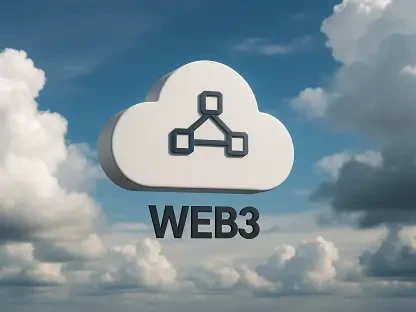In the fast-paced and ever-changing landscape of cloud computing, a notable transformation is unfolding that is reshaping how enterprises approach IT infrastructure, and for years, hyperscalers such as Amazon Web Services (AWS), Microsoft Azure, and Google Cloud Platform (GCP) have held an iron grip on the market, providing vast scalability and global reach. However, a growing wave of alternative cloud providers—smaller, often more specialized players like Vultr, DigitalOcean, and CoreWeave—is emerging as a formidable challenge to this dominance. These alternative providers are capturing the attention of businesses by offering cost-effective solutions and tailored services that address specific needs often overlooked by the giants. As organizations grapple with rising costs and the limitations of a one-size-fits-all approach, the appeal of alternative clouds is becoming harder to ignore. This shift signals a broader movement toward diversification in cloud strategies, reflecting a maturing market where flexibility and customization are increasingly valued. This article explores the driving forces behind the rise of alternative clouds, their unique strengths, the challenges they face, and their evolving role alongside hyperscalers in today’s multicloud environment.
Financial Pressures Fueling the Shift
The escalating costs associated with hyperscalers are a primary catalyst propelling organizations toward alternative cloud providers. Many businesses have discovered that expenses with major providers often spiral far beyond initial projections, sometimes reaching two to three times the anticipated amount due to factors like data egress fees and complex pricing structures. Research indicates that cloud infrastructure can account for as much as 50% of the cost of goods sold for software companies, placing a significant burden on budgets. Alternative clouds, by contrast, frequently offer enterprise-grade hosting at a fraction of the cost, with savings ranging from 20% to 60% when utilizing on-demand private cloud options. This financial relief is particularly appealing for cost-sensitive workloads such as e-commerce platforms or media streaming services, where every dollar counts. By presenting a more affordable alternative without compromising essential functionality, these providers are redefining the economic landscape of cloud computing.
Moreover, the transparency in pricing offered by alternative clouds addresses a critical pain point for enterprises frustrated by hidden fees. Unlike hyperscalers, where charges for moving data out of the cloud can accumulate unexpectedly, many alternative providers either eliminate egress fees entirely or keep them minimal. This predictability allows companies to better plan their IT expenditures and avoid the sticker shock often experienced with larger vendors. Additionally, the cost advantage extends to smaller businesses and startups that may lack the resources to absorb the hefty bills of hyperscalers. For these organizations, alternative clouds provide a viable entry point into cloud computing, enabling them to scale operations without breaking the bank. The financial incentive is clear, positioning alternative providers as a compelling choice for a wide range of industries seeking to optimize spending.
Specialization as a Competitive Edge
Alternative cloud providers are distinguishing themselves not just through cost but by honing in on niche areas where hyperscalers often fall short. For instance, companies like CoreWeave and Lambda have tailored their offerings to support AI-driven workloads, providing GPU-powered computing services at a lower price point than their larger competitors. This specialization is crucial for organizations developing complex machine learning models or generative AI applications, where access to high-performance computing is non-negotiable. Similarly, providers like Akamai Cloud focus on edge computing, delivering low-latency solutions that are ideal for industries such as gaming and live streaming, where every millisecond of delay impacts user experience. By addressing these specific demands with precision, alternative clouds fill critical gaps in the market.
Equally important is the ability of alternative providers to meet regional and regulatory requirements that are increasingly vital in a globalized economy. Companies like OVHcloud and Scaleway prioritize data sovereignty, ensuring compliance with strict regulations such as GDPR in the European Union by keeping data within local jurisdictions. This focus is particularly relevant for sectors like healthcare and government, where data privacy and security are paramount. Unlike the broad, generalized approach of hyperscalers, these providers offer customized solutions that align with specific legal and operational needs. The result is a growing trust among enterprises that require more than just raw computing power—they need partners who understand the intricacies of their unique challenges. This targeted expertise is proving to be a significant differentiator in the competitive cloud arena.
Navigating the Multicloud Landscape
The surge in alternative cloud adoption is closely tied to the broader trend of multicloud strategies, where businesses leverage multiple providers to maximize flexibility and minimize risks. Recent surveys reveal that nearly 75% of organizations now utilize two or more alternative cloud providers in conjunction with hyperscalers, reflecting a deliberate move away from reliance on a single vendor. This diversification helps mitigate the dangers of vendor lock-in, where dependency on one provider can limit agility and increase costs over time. By mixing and matching services based on cost, performance, and compliance requirements, companies create a more resilient IT ecosystem that can adapt to changing needs. The multicloud approach is becoming a cornerstone of modern enterprise strategy, with alternative clouds playing a pivotal role.
However, integrating multiple providers into a cohesive system presents notable challenges that cannot be overlooked. The complexity of managing diverse platforms often requires advanced tools and skilled personnel to ensure seamless operation and consistent performance across environments. Technologies like Kubernetes and cloud-agnostic standards are increasingly essential for maintaining interoperability and reducing friction in multicloud setups. Without proper management, organizations risk inefficiencies or security gaps that could undermine the benefits of diversification. Despite these hurdles, the industry is responding with innovative solutions designed to simplify multicloud operations. As businesses continue to embrace this model, the demand for robust management frameworks will only grow, highlighting the evolving nature of cloud computing strategies.
Balancing Strengths and Limitations
While alternative clouds are gaining ground, they face significant obstacles in establishing themselves as fully reliable alternatives to hyperscalers. One of the key concerns is their ability to match the security and uptime guarantees that larger providers offer through their extensive resources and global infrastructure. Hyperscalers remain the go-to choice for workloads that demand rapid scaling, such as seasonal traffic spikes or sudden demand surges, due to their proven track record and vast capacity. Alternative providers, though improving, often struggle to compete on this front, requiring ongoing investment in infrastructure and trust-building to close the gap. Demonstrating resilience and robustness remains a critical focus for these smaller players as they seek to expand their market share.
Interestingly, the relationship between alternative clouds and hyperscalers is not purely competitive but often complementary, reflecting the maturation of the cloud market. Many industry experts advocate for a balanced approach, where hyperscalers handle scalability and core infrastructure needs, while alternative providers address specialized requirements like AI computing or edge performance. This synergy allows enterprises to craft tailored solutions that leverage the strengths of both types of providers. As nearly 80% of organizations already run workloads across multiple hyperscalers and alternative clouds, the trend toward coexistence is evident. This cooperative dynamic underscores a future where diversity in cloud services is not just beneficial but essential for meeting the multifaceted demands of modern businesses.
Paving the Way for a Diverse Cloud Future
Reflecting on the evolution of cloud computing, it’s evident that alternative cloud providers have made substantial strides in challenging the long-standing dominance of hyperscalers. Their ability to deliver cost savings, often slashing expenses by 20% to 60%, alongside specialized services for AI, edge computing, and regulatory compliance, has positioned them as indispensable players in the IT landscape. Despite hurdles in matching the reliability and scalability of larger vendors, their growth underscores a shift toward diversified strategies that prioritize flexibility over singular reliance. The integration challenges of multicloud environments are being met with innovative tools, signaling an industry adapting to complexity. Looking ahead, the path forward lies in fostering stronger collaboration between hyperscalers and alternative clouds, ensuring enterprises can harness the best of both worlds. Investment in management solutions and skill development will be crucial to streamline operations across providers. As the market continues to mature, embracing this hybrid approach will empower businesses to navigate evolving technological and regulatory demands with confidence, setting the stage for a more inclusive and adaptable cloud ecosystem.









